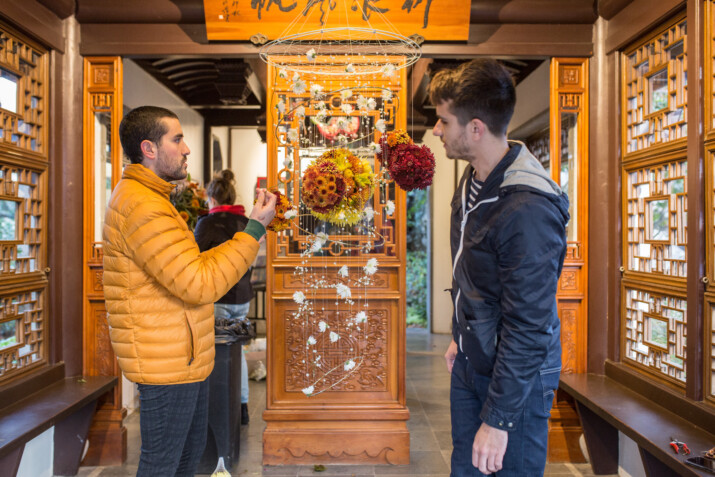Portland, October 9th. Heart disease is the No. 1 killer of women, but hundreds of American Hearth Association supporters joined forces at the annual Go Red for Women luncheon to raise money and learn how it can be prevented. At The Nines Hotel, they heard from Julie O’Leary, a heart attack survivor who had her husband, Chris by her side. The $142,599 raised at the event is earmarked for life-saving research, education, advocacy and more in Oregon & SW Washington.

Local firefighters handed out “blinky hearts” to guests who made donations.

Julie O’Leary told supporters the story of her heart attack .

Go Red Heart Health Panelists: Dr. Laurie Armsby with OHSU; Sandra McDonough with the Portland Business Alliance; Susan Sokol Blosser of Sokol Blosser Winery and DJ Wilson with KGW NewsChannel 8 (Moderated by Susan Mullaney with Kaiser Sunnyside Medical Center)

Shauna Parsons was the emcee.

Chairwoman Susan Mullaney with Kaiser Sunnyside Medical Center
About the event:
Cardiovascular disease, which claims the lives of 460,000 annually, is the No. 1 cause of death among women. The annual Go Red for Women Luncheon is aimed at raising funds and public awareness to fight the disease.
Here’s some good general information to review:
Overview
More women die of cardiovascular disease than from the next four causes of death combined, including all forms of cancer. But 80 percent of cardiac events in women could be prevented if women made the right choices for their hearts involving diet, exercise and abstinence from smoking. Make it your mission to learn all you can about heart attacks and stroke — don’t become a statistic. CALL 9-1-1
Heart Attack
A heart attack occurs when the blood flow to a part of the heart is blocked, usually by a blood clot. If this clot cuts off the blood flow completely, the part of the heart muscle supplied by that artery begins to die.
Signs of a Heart Attack:
- Uncomfortable pressure, squeezing, fullness or pain in the center of your chest. It lasts more than a few minutes, or goes away and comes back.
- Pain or discomfort in one or both arms, the back, neck, jaw or stomach.
- Shortness of breath with or without chest discomfort.
- Other signs such as breaking out in a cold sweat, nausea or lightheadedness.
- As with men, women’s most common heart attack symptom is chest pain or discomfort. But women are somewhat more likely than men to experience some of the other common symptoms, particularly shortness of breath, nausea/vomiting and back or jaw pain.
If you have any of these signs, don’t wait more than five minutes before calling for help. Call 9-1-1…Get to a hospital right away.
Stroke
Stroke is the No. 4 cause of death in America. It’s also a major cause of severe, long-term disability. Stroke and TIA (transient ischemic attack) happen when a blood vessel feeding the brain gets clogged or bursts. The signs of a TIA are like a stroke, but usually last only a few minutes. If you have any of these signs, don’t wait more than five minutes before calling for help.
Call 9-1-1 to get help fast if you have any of these, but remember that not all of these warning signs occur in every stroke.
Signs of Stroke and TIAs
- Sudden numbness or weakness of the face, arm or leg, especially on one side of the body
- Sudden confusion, trouble speaking or understanding
- Sudden trouble seeing in one or both eyes
- Sudden trouble walking, dizziness, loss of balance or coordination
- Sudden severe headache with no known cause
Also, check the time so you’ll know when the first symptoms appeared. It’s very important to take immediate action. Research from the American Heart Association has shown that if given within three hours of the start of symptoms, a clot-busting drug can reduce long-term disability for the most common type of stroke.
















